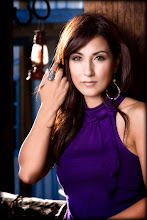 "Clothes and manners do not make the man; but when he is made, they greatly improve his appearance".
"Clothes and manners do not make the man; but when he is made, they greatly improve his appearance".
Arthur Ashe
Most men look great in a traditional Business Suit. Dark colors, well tailored suits and sharp accents, give an image of power and style. However when it comes to coordinate a suit with a shirt, a tie or accessories, not many men know how to maximize their look to its best potential. So how do we coordinate all the pieces of the attire?
There are some rules to follow when coordinating a men's business suit:
First thing to consider is Fabric Pattern. The "safe" rule when coordinating Pattern in a Business Suit is: "2 Pieces Plain, 1 Piece Pattern"; so when wearing a solid color suit, consider a solid color shirt and a tie with some pattern, or reverse to a pattern shirt and a solid tie. When wearing a suit with some pattern, wear a solid shirt and tie. This is however a general and safe rule, mixing some patterns can also be very original and classy. When mixing pattern, we should consider a few points: The size of the pattern, the design of the pattern (dots, stripes, etc.), color and intensity (subtle or strong). When coordin ating two or more patterns, make sure that they are not the same size and that some of the colors in each piece match. Strong and Bright patterns should be paired with subtle ones. The strongest and most authoritative business suit has no patterns, it's a solid color; some subtle pattern suit, however, work just like solids (like some tone on tone pin stripes). Pattern, like color can also help to project a certain image. Vertical lines help the individual look taller and slimmer, slanting stripes take attention away from a bigger face by drawing the eye downward. Stripes can be paired, however, keep them in different sizes and intensity.
ating two or more patterns, make sure that they are not the same size and that some of the colors in each piece match. Strong and Bright patterns should be paired with subtle ones. The strongest and most authoritative business suit has no patterns, it's a solid color; some subtle pattern suit, however, work just like solids (like some tone on tone pin stripes). Pattern, like color can also help to project a certain image. Vertical lines help the individual look taller and slimmer, slanting stripes take attention away from a bigger face by drawing the eye downward. Stripes can be paired, however, keep them in different sizes and intensity.
Color coordinating is extremely important too. Dark colors are more formal than light ones, and since they recede they are great to make the body look slimmer. Keep this "safe" rule in mind when color coordinating a business suit: " 2 Pieces Dark, 1 Piece Light" or "2 Pieces Light, 1 Piece Dark". For example, with a Navy suit (dark), wear a white shirt (light) and a powder blue tie (light), or a navy suit (dark) with a white shirt (light) and a red/maroon tie (dark). Shirts and ties look best  when their colors contrast, and as a general rule, the ties should be darker than the shirts. Keep the colors harmonized, "2 Soft colors and 1 Sharp color" (a grey suit look great with a pale blue shirt and a dark blue tie), "2 Sharp, 1 Soft" (a navy suit with a baby blue shirt and a red/ maroon tie) or keep them all sharp (a black suit with a white shirt and a red tie), to please the eye. Try to match the best colors to your skin complexion and hair color: Darker/warmer skin and hair looks best in bright, rich and crisp colors, like navy, saturated blacks and reds. Lighter and cooler complexions and hair look best in light, faded colors like gray/charcoal and lighter blue. Both look good in neutral and earth tones.
when their colors contrast, and as a general rule, the ties should be darker than the shirts. Keep the colors harmonized, "2 Soft colors and 1 Sharp color" (a grey suit look great with a pale blue shirt and a dark blue tie), "2 Sharp, 1 Soft" (a navy suit with a baby blue shirt and a red/ maroon tie) or keep them all sharp (a black suit with a white shirt and a red tie), to please the eye. Try to match the best colors to your skin complexion and hair color: Darker/warmer skin and hair looks best in bright, rich and crisp colors, like navy, saturated blacks and reds. Lighter and cooler complexions and hair look best in light, faded colors like gray/charcoal and lighter blue. Both look good in neutral and earth tones.
Fabric weight is a very important element to consider. Heavy fabrics like wool, corduroy, suede and leather are usually associated with cooler weather (Fall and Winter) and can make the figure appear heavier; lighter fabrics like linen, silk and seersucker are more appropriate in warmer weather (Spring and Summer) and give the  image of a slimmer body. So consider the season and climate when choosing the right fabric for the business suit. As for the tie, Silk is a great choice all year round.
image of a slimmer body. So consider the season and climate when choosing the right fabric for the business suit. As for the tie, Silk is a great choice all year round.
Fabric texture is also very important, smooth texture is more elegant and gives off an image of authority and power, while some rougher textures can make the suit more interesting and at times even make a statement. Smooth and rough textures can be coordinated, but they have to be carefully balanced: An Oxford shirt can be paired with a smooth silk tie, but keep the suit in a smooth texture as well. Shiny textures are more appropriate for an evening event, while dull textures are more day wear. When picking socks, the rule is solid is more elegant than pattern, and you can either keep them a shade darker than the trouser or keep the the same color as the pants. Long (knee or calf length) socks are dressier than short ones.
When picking socks, the rule is solid is more elegant than pattern, and you can either keep them a shade darker than the trouser or keep the the same color as the pants. Long (knee or calf length) socks are dressier than short ones.
Shoes and belts should match each other in color and texture! Wear black, cordovan or brown shoes and belt with a grey, and navy suit. Earth tone suits, like brown, tan, olive should be paired with brown or cordovan shoes and belt. Black suits look good with black shoes and tie, even though a maroon-ish brown can be a very sharp contrast.
When choosing jewelry and embellishments (belt buckles) remember that silver (pewter) is more dressy than gold. however, the color is not as important as the level of elegance, for example don't wear a thick/gouty bracelet or a leather necklace, or a sport  watch with a classy suit. Keep the size of your watch in proportion with your body: A big man (body size..not ego!) needs a bigger watch, while a slender body would be better suited with a thinner watch. Two big faux pas are: class rings and rodeo belt buckles: they are a no-no with a business suit!
watch with a classy suit. Keep the size of your watch in proportion with your body: A big man (body size..not ego!) needs a bigger watch, while a slender body would be better suited with a thinner watch. Two big faux pas are: class rings and rodeo belt buckles: they are a no-no with a business suit!
There shouldn't be more than seven point of interest in your outfit (pocket square, bright tie, watch, belt, facial hair, glasses, cufflinks, vest, sharp buttons or anything that grabs attention).
Have fun with coordinating a fashionable look, keep your wardrobe and the knowledge of what's fashionable up to date, and remember that pushing the envelope is not always safe in a professional world, and should only occur when the art of coordination has been mastered, any sooner could result in a fashion faux pas. Try to leave taking chances in your casual look; don't be afraid to be edgy on the weekend, it will keep your life very interesting.
Be Fabulous,
Ella
Personal beauty, fashion trends, style, glamour like celebrities
http://www.beautybyella.com/
http://community.beautybyella.com/
Tuesday, January 29, 2008
Coordinate a Professional Men's Business Suit
Posted by
beautybyella
at
12:50 PM
![]()
Subscribe to:
Post Comments (Atom)

No comments:
Post a Comment